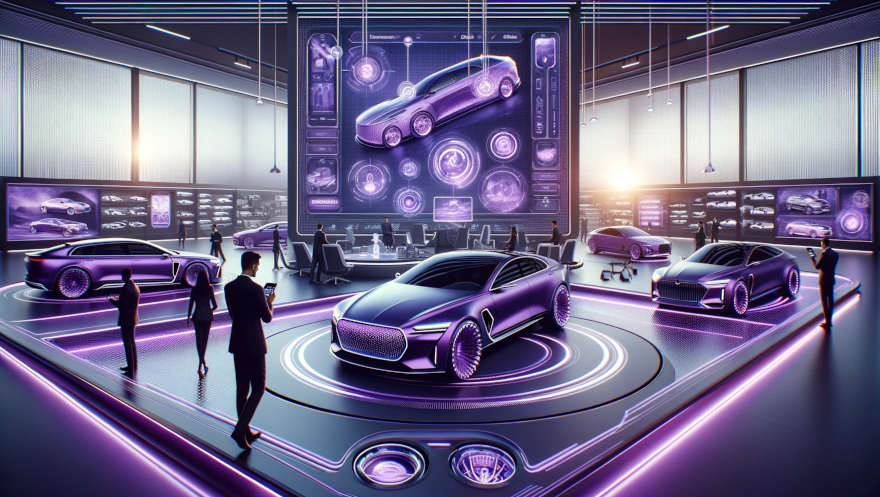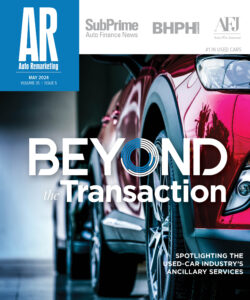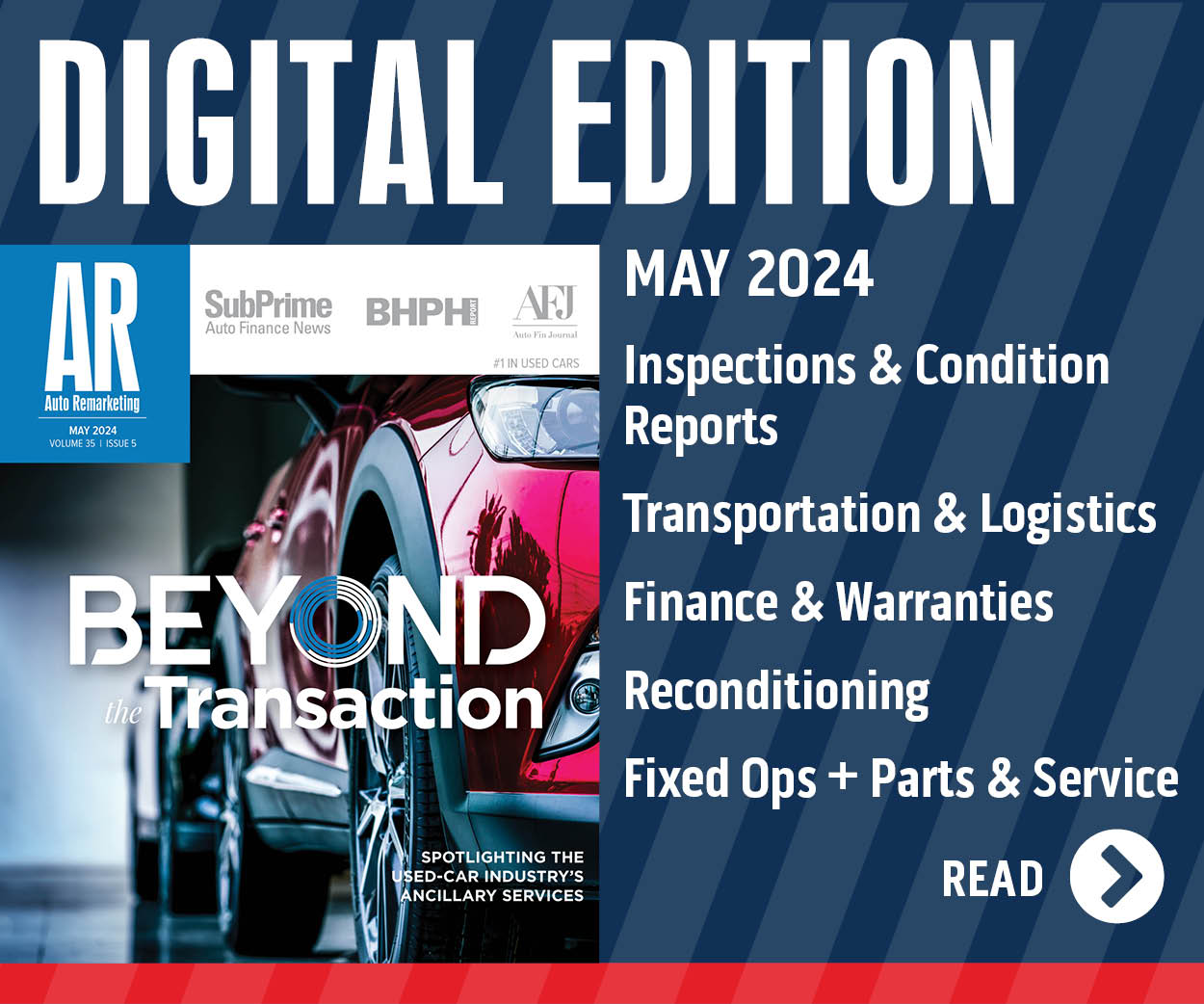COMMENTARY: The new dynamics of car retailing, navigating the post-pandemic shift

Image courtesy of RAVIN AI.
In the wake of the global pandemic, the automotive industry has been riding through a storm of unprecedented challenges and transformations. As the world gradually emerges from the shadows of COVID-19, a significant shift in the car retail landscape is becoming increasingly apparent, particularly in the electric vehicle sector.
The pandemic has accelerated changes in consumer behavior and expectations, leading to a notable shortage in the new- and used-car day’s supply.
This scarcity has underscored the resilience of traditional car retail methods, but as the industry evolves, a pivot towards a more omni-channel, customer-centric approach is inevitable. Dealerships that embrace this change are poised to thrive in the new era of automotive retailing.
The pandemic’s impact on car supply
The initial outbreak of COVID-19 brought the global automotive industry to a near standstill.
Manufacturing shutdowns, supply chain disruptions, and workforce constraints led to a significant drop in vehicle production. Despite the gradual resumption of operations, the industry has been grappling with a persistent shortage of semiconductors and other critical components, further straining the supply of both new and used vehicles.
This scarcity has not only driven up prices but also prolonged the day’s supply of cars on dealer lots, a metric that indicates how long the current inventory would last at the current sales rate.
Historically, a balanced automotive market would have a 60-day supply of vehicles. However, during the pandemic, this figure plummeted, with some dealers facing day supplies in the teens.
This shortage has allowed dealers to maintain traditional retail methods, such as requiring customers to make appointments for in-store visits, trades, and test drives. The high demand and low supply have given dealerships leverage, enabling them to stick to conventional sales tactics and avoid discounting vehicles.
Shifting consumer expectations
While the pandemic has temporarily bolstered traditional retail practices, it has also accelerated a shift in consumer expectations towards a more digital, convenient, and personalized buying experience.
The rise of EV manufacturers like Tesla and Rivian, which have eschewed traditional dealership models in favor of direct sales and online ordering, has set new
benchmarks for customer experience. These companies offer a seamless online-to-home buying journey, from virtual test drives to doorstep delivery, reshaping what consumers expect from the car buying process.
The enforced physical distancing of the pandemic has further amplified consumers’ appetite for digital engagement. Buyers have grown accustomed to the convenience of researching, customizing, and purchasing vehicles online. This digital-first approach, complemented by personalized virtual consultations and home delivery services, is becoming the new norm.
As the days’ supply of vehicles begins to stabilize and grow, dealers will need to adapt to these evolving customer expectations. The transition to an omni-channel strategy, which integrates online and offline experiences, is no longer a luxury but a necessity for survival.
The omni-channel imperative
Embracing an omni-channel approach requires a fundamental rethink of the traditional dealership model. Dealers need to leverage technology to offer a cohesive experience across all channels, ensuring that customers can move seamlessly between online research, virtual consultations, in-store visits, and home test drives.
This approach not only caters to the heightened expectations of digital-savvy consumers but also expands the dealership’s reach beyond its physical location.
Furthermore, an omni-channel strategy enables dealers to collect and analyze data from various touchpoints, providing valuable insights into customer preferences and behaviors. This data-driven approach can inform personalized marketing, sales strategies, and after-sales support, enhancing customer satisfaction and loyalty.
Adapting to the new retail landscape
Dealerships that quickly adapt to the omni-channel model will be better positioned to thrive in the post-pandemic world. This adaptation involves not only investing in digital platforms and capabilities but also retraining staff to navigate the blended online-offline environment effectively.
Sales teams need to become as proficient in conducting virtual vehicle demonstrations and consultations as they are in traditional in-person sales tactics.
Moreover, the physical dealership space may need to be reimagined to complement the digital experience. For example, showrooms could be transformed into experience centers where customers can explore and interact with vehicles in more engaging and innovative ways, supported by digital tools and augmented reality.
Operational shifts and challenges
The move towards an omni-channel approach requires significant operational shifts. Dealerships must invest in robust digital infrastructure to support online sales, virtual consultations, and digital marketing strategies.
This includes the development of user-friendly websites, e-commerce platforms, and personalized digital communication tools. However, the integration of digital and physical operations presents challenges, particularly in maintaining a consistent brand experience across all channels and ensuring data security and privacy.
Training staff to adapt to new technologies and sales approaches is another critical component.
Employees must be equipped with the skills to handle digital inquiries, manage online sales processes, and deliver the same level of personalized service online as they do in person. This shift also necessitates a change in dealership culture, emphasizing flexibility, customer-centricity, and innovation.
Role of sustainability
Sustainability is becoming a driving force in consumer purchasing decisions, particularly in the electric vehicle market. As more consumers prioritize environmental impact in their vehicle choices, dealerships must align their operations and offerings with these values. This includes not only selling EVs and hybrid models but also implementing sustainable practices in dealership operations, such as reducing energy consumption, minimizing waste, and adopting green technologies.
Promoting sustainability can also be a key differentiator in the competitive automotive market.
Dealerships that highlight their commitment to environmental responsibility can attract a growing segment of eco-conscious consumers. This approach aligns with the broader industry trend towards electrification and sustainability, positioning dealerships as forward-thinking partners in the transition to cleaner transportation.
Broader implications for the automotive ecosystem
The shift to omni-channel retailing and the emphasis on sustainability have broader implications for the automotive ecosystem. Manufacturers must work closely with dealerships to facilitate a seamless customer journey, from online research to vehicle delivery. This collaboration can extend to developing shared digital platforms, co-creating marketing strategies, and providing training and support for new technologies.
Furthermore, the rise of EVs and the focus on sustainability are accelerating changes in automotive design, manufacturing, and supply chain management. Manufacturers and suppliers are investing in cleaner production processes, renewable energy, and recyclable materials, reshaping the industry’s environmental footprint.
Preparing for the future
As dealerships adapt to the omni-channel model and embrace sustainability, they are not just responding to current market dynamics but preparing for the future of the automotive industry.
This transition requires a long-term vision, investment in technology and people, and a commitment to continuous improvement.
The success of this transformation will depend on dealerships’ ability to innovate, adapt, and meet the evolving expectations of consumers. Those that can effectively integrate digital and physical experiences, offer personalized and sustainable options, and build strong customer relationships will lead the way in the new era of automotive retailing.
Conclusion
The pandemic has accelerated a seismic shift in the automotive retail landscape, with profound implications for dealerships. The shortage of new and used vehicles has temporarily reinforced traditional retail methods, but the growing days’ supply signals a need for change.
As consumer expectations evolve towards a more digital, convenient, and personalized buying experience, the adoption of an omni-channel approach becomes critical. Dealerships that embrace this shift, leveraging technology to integrate online and offline experiences, will not only survive but also thrive in the new era of automotive retailing. The journey ahead is challenging, but for those willing to innovate and adapt, it offers a road filled with opportunities.
Jim O’Brien is general manager of the America’s for RAVIN AI

 View The Latest Edition
View The Latest Edition

